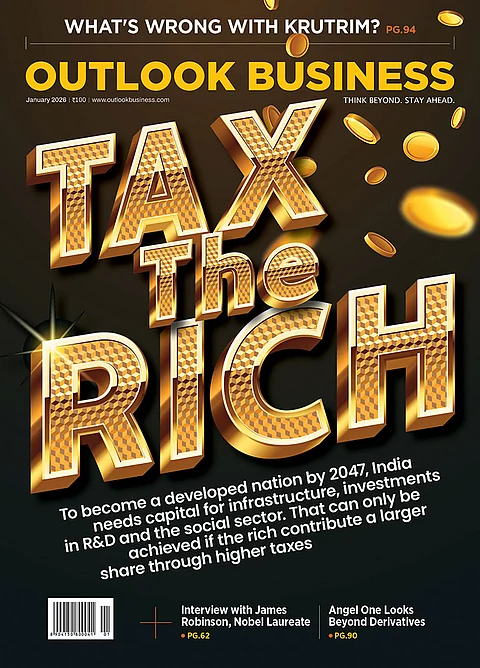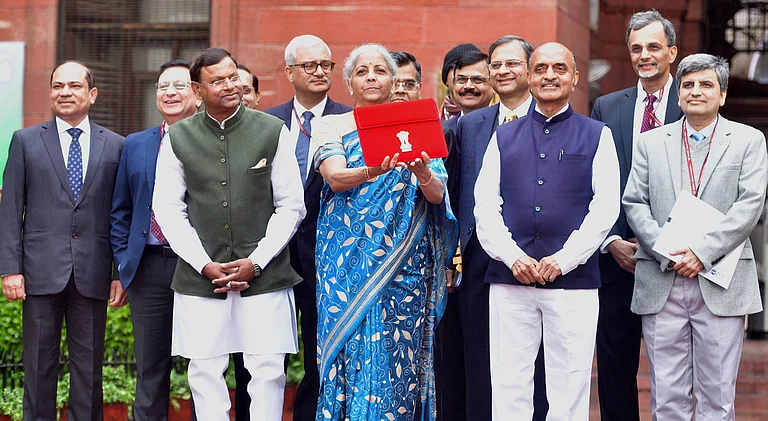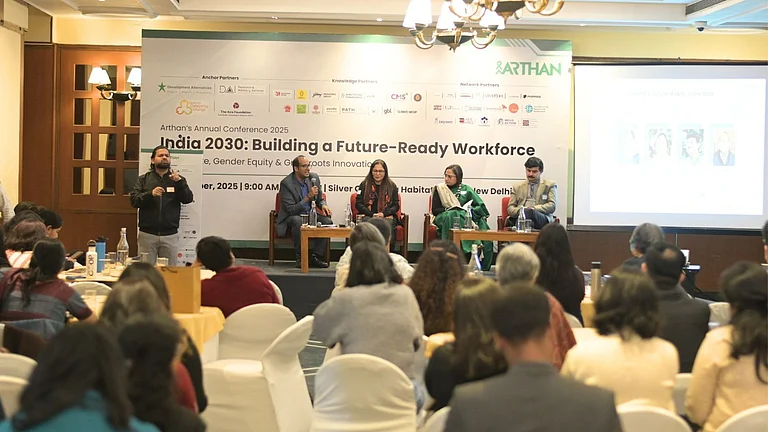Finance Minister Nirmala Sitharaman announced an allocation of Rs 1,71,437 crore, up from Rs 1,32,470 crore allocated last year, to the agriculture sector on Saturday during her record eighth consecutive budget. She said that proposed development measures in the budget 2025 span 10 broad areas, focusing on the poor, youth, farmers and women.
Among the 10 areas, the budget not only emphasises spurring agricultural growth and productivity but also building rural prosperity and resilience.
"The global trends do not seem very exciting but this budget has managed to push necessary yet exciting avenues for the Indian agriculturist," says Mayur Modi, co-founder at MoneyBoxx, pointing out that the Economic Survey 2025 shows agricultural commodity prices likely to decline.
Announcements Made for Agriculture
Calling agriculture the first engine for India's journey of development, Sitharaman announced Prime Minister Dhan-Dhaanya Krishi Yojana, covering 100 districts with low productivity, moderate crop intensity and below-average credit parameters. She said that this programme is likely to help 1.7 crore farmers.
A comprehensive multi-sectoral ‘Rural Prosperity and Resilience’ programme was also announced to address underemployment in agriculture through skilling, investment, technology, and invigorating the rural economy.
"Our Government will now launch a 6-year “Mission for Aatmanirbharta in Pulses” with a special focus on Tur, Urad and Masoor," said the Minister, adding that the government is also implementing the National Mission for Edible Oilseed for achieving self-reliance in edible oils.
The Finance Minister also announced the establishment of Makhana Board in Bihar to improve the production, processing, value addition, and marketing of foxnut.
"The Board's formation will streamline the entire value chain - from production and processing to value addition and marketing of fox nuts. For farmers engaged in makhana cultivation, this initiative opens doors to skill development and institutional support, creating a win-win ecosystem for both agricultural communities and industry," noted Akash Sharma, co-founder of Farmley.
Furthermore, the government has enhanced the loan limit under the Modified Interest Subvention Scheme from Rs 3 lakh to 5 lakh for loans taken through the Kisan Credit Cards (KCC).
To ensure a steady supply of quality cotton, helping farmers to increase incomes, a 5-year ‘Mission for Cotton Productivity’ was also announced by the finance minister.
George Alexander Muthoot, managing director of Muthoot Finance believes that these measures will not only enhance agricultural productivity but also boost rural consumption.
Consumption in Focus
Lauding the budget 2025 as "people's budget", Prime Minister Narendra Modi said that it was aimed at boosting "savings, investment, consumption and growth" rapidly.
A recent slowdown in rural consumption of daily necessities also raised concern among the industry players. According to a Kantar report, the slowdown was majorly driven by high wheat flour or atta prices which is a mega category for the market.
The impact of subdued demand in the country was visible from the last few earnings seasons of consumer-facing firms like Hindustan Unilever and Dabur. This was mostly due to the eroding purchasing power of the consumers, especially in urban areas. According to The Indian Express, FMCG companies likely report low-single-digit revenue growth in the December quarter of FY25 due to sluggish urban demand.
"For the FMCG sector, this budget reinforces India’s consumption-driven economy, fostering growth through rural development, infrastructure, and job creation. Additionally, a strong push toward food processing, post-harvest storage, and supply chain efficiencies will enhance value creation, benefiting both producers and consumers," says KRBL's India business head Ayush Gupta.
Even as the Economic Survey 2025 underlined that the domestic economy remains steady amidst global uncertainties, it is still estimated to grow at four-year low of 6.4% in FY25.
The share of private final consumption expenditure (PFCE) in India’s gross domestic product (GDP) at current prices is estimated to increase from 60.3% in FY24 to 61.8% in FY25. The survey noted that this is the highest since FY03. However, this growth is primarily driven by rural consumption.
From consumer space, rural consumption is holding up against slowing urban consumption due to a solid Kharif harvest in 2024 and inflation finally starting to moderate in the food basket, according to SBI Securities. It also shows a divide that only the middle-class segment is shrinking which is eventually leading to a decline in mid-range product demand. Meanwhile, premium FMCG products continue to thrive.
Echoing Gupta's sentiment, Chirag Jain, partner at Grant Thornton Bharat, also noted that agricultural budget allocations are expected to boost rural incomes and further the consumption of goods and services. However, he said, the lack of emphasis on food processing and market reforms may limit long-term income stability, affecting sustained rural demand growth.
Modi from MoneyBoxx also believes that indirect initiatives such as taxation and corporate policies are also likely to spur both exports and domestic consumption which would also be value-accretive to the farm sector.
According to a recent SBI report, a significant decline observed in consumption inequality across rural and urban regions. The report said that the improvement was observed due to the government’s initiatives including direct benefit transfers, enhanced rural infrastructure, efforts to boost farmers’ income, and overall improvements in rural livelihoods.
As per government data, the rural-urban consumption gap narrowed to 70 per cent in 2023-24 from 71 per cent in 2022-23.
Now anticipation remains if the government’s robust investment will help sustaining this rural consumption to support India’s growth vision.































